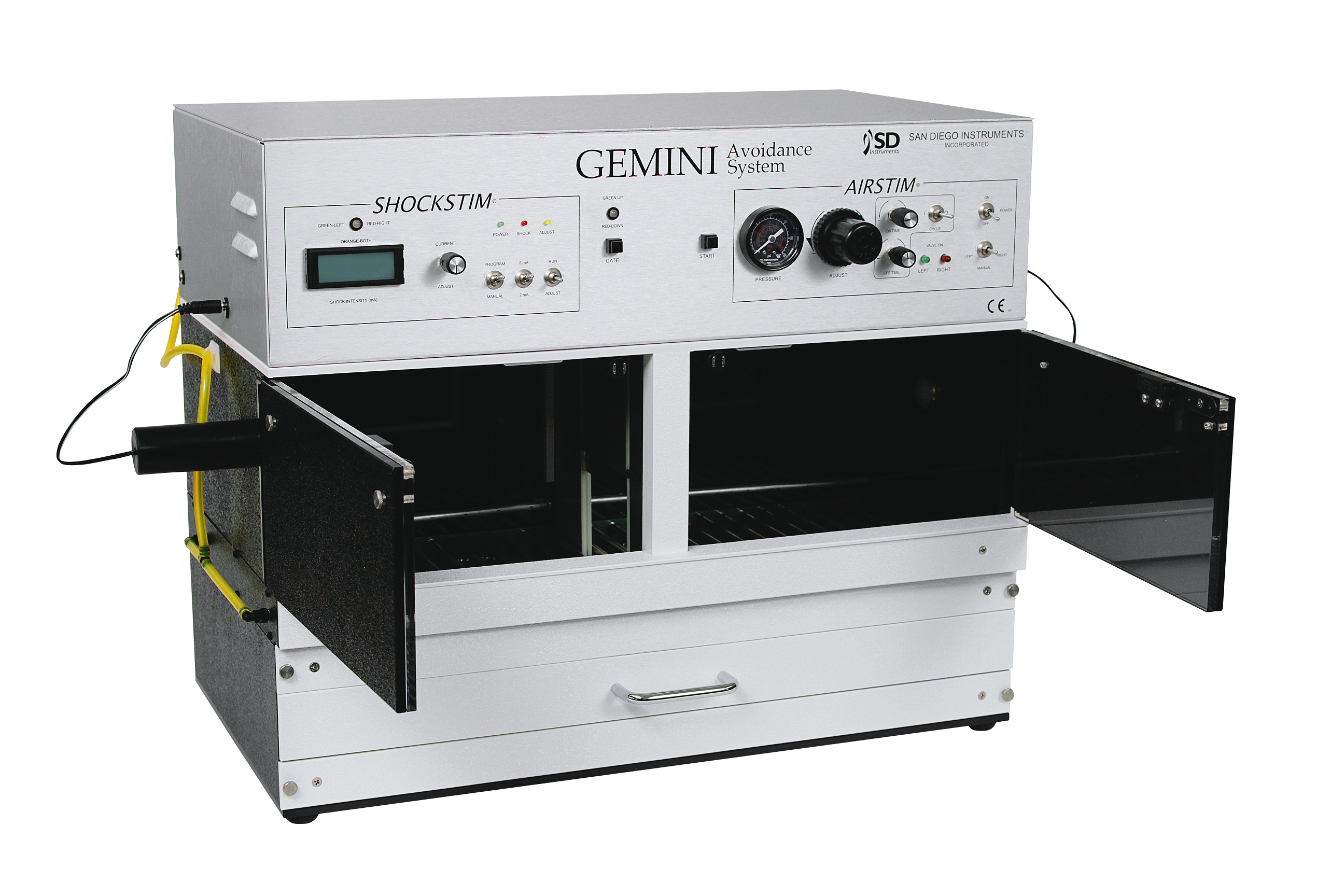The theory of passive avoidance is an associated learning theory based on fear motivation. The animal is subjected to a foot shock in a dark compartment which the animal would usually prefer over the light area. The passive avoidance test requires the animal to stop its standard response to the stimulus, inhibiting locomotion and exploration.

How to Carry Out a Passive Avoidance Task
At the start of a test, an animal is placed into the chamber and allowed to explore both sides. The next day the animal is put in a brightly lit compartment of the test box. The standard response of the animal would be to move into the dark compartment next to it. However, when the animal enters this compartment it will receive a mild foot shock.
The next phase of the experiment is usually around 24 hours later with the animal being placed back into the lit compartment. Then the tester notes whether or not the animal re-enters the dark area or remembers the shock and avoids it. [1]
Passive (Inhibitory) Avoidance
Memory in a passive avoidance test is gauged by the delay of the response as this is an active process. This is why some researchers refer to the investigations as inhibitory instead of passive and during the training, the latency to go into the preferred compartment is noted.
What Do Passive Avoidance Tests Show
Passive avoidance tests can display a procedural memory in which animals acquire both explicit and declarative memories. Passive avoidance behavior helps identify the neuromodulatory systems and the interactions they cause in the brain regions. Avoidance learning can be used to assess both short and long-term memory.[2]
The Gemini Active and Passive Avoidance System
This system from San Diego Instruments has been expertly designed for use in learning and memory studies. It has been specifically designed to test active and passive avoidance in mice and rats for the sole purpose of avoidance studies.
The unique design of this equipment can run as many as eight independently operated stations and eliminates run time data entry that impacts the accuracy of results. It allows high levels of flexibility, saving all data in one file and pre-assigning protocol to every test session.
The eight photo beams on each side of the system accurately locate the animals and ensure that the animal has fully entered a compartment, eliminating false crossing errors.
[1] Jänicke, B., & Coper, H. (1996). Tests in rodents for assessing sensorimotor performance during aging. Changes in Sensory Motor Behavior in Aging, 201–233. https://doi.org/10.1016/s0166-4115(96)80010-0
[2] Encyclopedia.com. (2022, March 15). .” learning and memory. . encyclopedia.com. 28 Feb. 2022 . Encyclopedia.com. Retrieved March 15, 2022, from https://www.encyclopedia.com/psychology/encyclopedias-almanacs-transcripts-and-maps/passive-inhibitory-avoidance-fear-learning